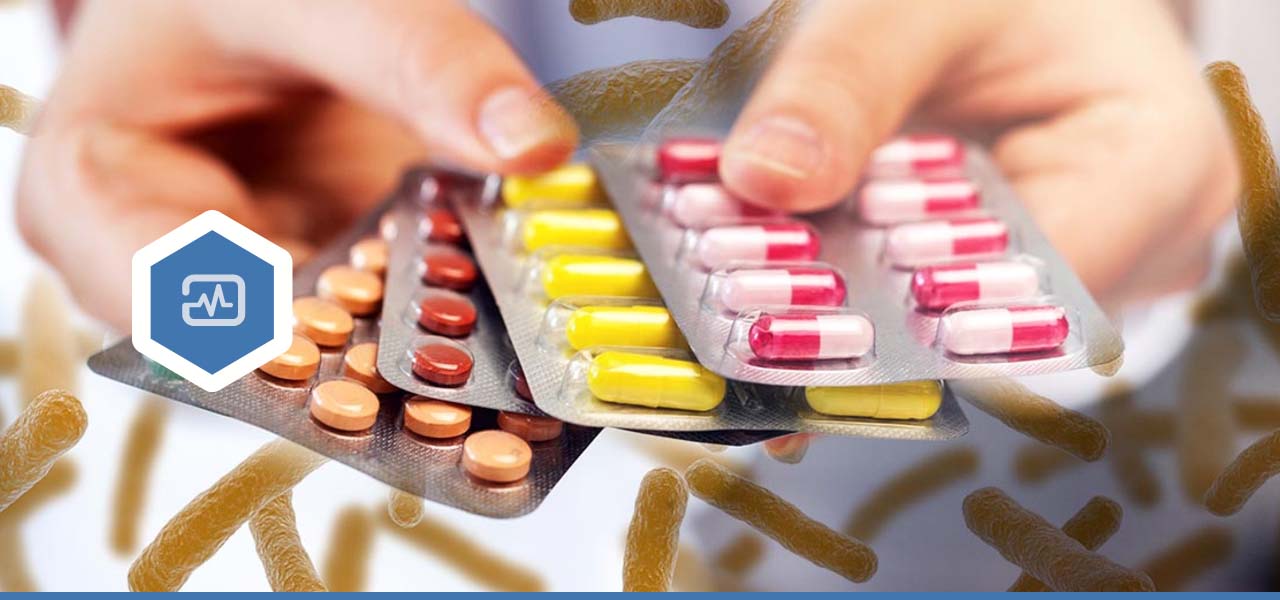
Even before COVID-19, the lack of effective treatments for easily spread diseases was a serious concern for scientists and healthcare providers worldwide – particularly as one of humankind’s greatest achievements, antibiotics, are increasingly ineffective. This is because bacteria, like all life forms, are driven to reproduce and live. Able to evolve rapidly, they continually seek ways to survive our killer drugs … and they’re succeeding.
The original superbug is methicillin-resistant Staphylococcus aureus (MRSA), which can shrug off antibiotics and turn otherwise harmless staph infections into fatal events. But MRSA is no longer alone; the World Health Organization states that a growing number of bacterial infections are becoming harder – even impossible – to treat, including pneumonia, tuberculosis, blood poisoning, gonorrhea, and foodborne diseases. The danger goes beyond health, as drug resistance also impacts economies and threatens security.
Recognizing the threat, Weizmann Institute of Science researchers have long been using sophisticated technologies to increase knowledge about infection processes, how medicines work, and to build better antibiotics, including next-generation versions that can fight evolving microbes. In recognition of Antibiotic Resistance Awareness Month, it is reassuring to look at what Weizmann scientists are doing to protect us.
-
Designing new antibiotics. Prof. Ada Yonath literally knows the ribosome inside and out, having won the 2009 Nobel Prize in Chemistry for deciphering its structure and function. She is using her expertise with the ribosome – aka the cell’s protein factory – to understand how antibiotics work. Researchers sometimes know that a medication is effective, but not how, and Prof. Yonath has revealed the mechanism of action for the most commonly used antibiotics. This knowledge is crucial in order to build new ones. “Our studies are providing structural information that can be used for the design of new and improved antibiotic drugs,” she says.
-
Cellular “factory” to develop drugs. Another scientist studying the ribosome, Prof. Roy Bar-Ziv, sought to reveal how it is able to manufacture its own parts. Several years of intensive research later, Prof. Bar-Ziv has demonstrated how one ribosomal subunit – 30S – is able to synthesize and assemble itself. He and his team believe that this new insight into producing complex, multi-component structures could pave the way to creating a host of other complex molecular structures. Prof. Bar-Ziv’s cellular “factory on a chip” could be used to design, produce, and test drugs against antibiotic-resistant bacteria and, in the future, could lead to the development of novel types of vaccines.
-
Predicting illness for early intervention. Once symptoms of tuberculosis appear, patients must take three different antibiotics over nine months. As a result, tubercular antibiotic resistance has become rampant. If people at risk “could be identified when the bacterial load is smaller, their chances of recovery will be better,” says Dr. Roi Avraham.
To that end, Dr. Avraham and his team developed an algorithm that could predict the onset of diseases such as tuberculosis. Basing their study on what happens when immune cells and bacteria meet, the team started with salmonella (as the WHO said, antibiotic resistance in foodborne bacteria is also a problem); after effectively predicting the course of the infection, the group took on tuberculosis, ultimately training their algorithm “to predict, early on, which of the carriers would develop the active form of the disease.”
Furthermore, as Dr. Avraham points out, in places where a disease like tuberculosis is endemic, this knowledge gives officials “a better way to keep the suffering and incidence of sickness down while reducing the cost of treatment.” His lab is refining the algorithm to include other infectious pathogens.
-
Finding the genes of resistance. Prof. Rotem Sorek has developed a high-throughput approach to identify genes that contribute to antibiotic resistance and allow bacteria to thrive even in the presence of medication. Looking at riboregulators – RNA elements that can trigger the premature termination of protein production – his team has detected several that control the activation of genes involved in antibiotic resistance.
Prof. Sorek has used the platform to detect numerous factors involved in regulating antibiotic-resistance genes. “Our approach opens the door to identifying the genes used by bacteria to resist antibiotics,” he says. “We hope to develop means to inhibit these genes, so that antibiotic medications can do their job.”
Many other cutting-edge, innovative research projects are underway as Weizmann scientists seek to understand, predict, treat, and stop antibiotic resistance. Please help them make our post-antibiotic world as safe as possible.
